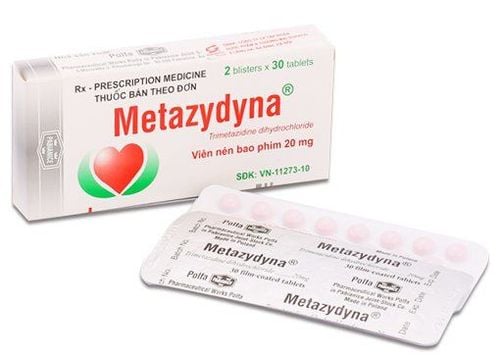This is an automatically translated article.
The article is written by Master, Doctor Dao Kim Phuong - Cardiologist and Echocardiographer - Department of Examination - Vinmec Times City International HospitalCyanosis occurs in about one-third of potentially fatal forms of congenital heart disease (TBS). Early recognition, resuscitation, and transport to an appropriate cardiovascular care center are important for the survival of neonates with cyanosis.
1. Prenatal diagnosis
Prenatal ultrasound helps to identify structural malformations including congenital heart disease (TBS), diaphragmatic hernia and cystic congenital adenoma malformation; however, the sensitivity of ultrasound to detect TBS is highly variable depending on the expertise of the operator, gestational age, fetal position, and type of defect. Therefore, prenatal ultrasound will miss some TBS patients with cyanosis. That's why it's important to have fetal echocardiograms by a trained fetal cardiologist, not just regular obstetric ultrasounds.2. Postpartum diagnosis
In neonates not identified by prenatal ultrasonography, cyanotic congenital heart disease may be suspected based on history, physical examination, screening for SpO2, chest radiography, and or electrocardiogram (ECG). ECG). Diagnosis is confirmed by echocardiography. The test for high-concentration oxygen, which distinguishes TBS from respiratory causes of cyanosis, is used in some settings if echocardiography in children is not available.Central cyanosis due to decreased arterial oxygen saturation is usually felt when the hemoglobin level falls above 3 g/dL. It may be due to a number of different pathological mechanisms due to cardiac disorders, lung abnormalities, or hemoglobinopathy.
Physical examination, chest X-ray, and electrocardiogram can help distinguish the more common forms of cyanotic TBS from each other and from other causes of central cyanosis. Echocardiography confirms the diagnosis and determines the basic anatomy and function of the heart.
History: Maternal medical or prenatal conditions, or family history of TBS, should be identified that increase the risk of TBS. Physical examination: Physical examination is helpful in distinguishing TBS from other cyanotic disorders, such as respiratory disease or sepsis. Once a cardiac cause has been identified, physical examination also provides clues to the underlying cardiac defect. Vital signs: In neonates with cyanosis, pulse, respiratory rate, oxygen saturation, and blood pressure (measured in the right arm and one of the legs) can be similar between TBS and other causes. In some cases, findings may indicate a specific heart injury.
Blood pressure gradient between arms and legs, or weak or absent femoral pulse, suggests left ventricular dysfunction associated with severe coarctation of the aorta or disrupted aortic arch. If the ductus arteriosus is large, no pressure gradient can be detected between the arms and legs in these disorders. Severe respiratory failure manifested by rapid breathing, contractions, and irritability often indicates a breathing problem. However, some structural heart diseases can present with similar symptoms. Examples of the latter include total anomalous pulmonary venous connection with obstruction and left-sided obstructive disease (eg, hypoplastic left heart syndrome [HLHS], severe aortic stenosis, and coarctal stenosis. heavy motherboard). Neonates with cyanotic TBS often present with cyanosis with mild or no tachypnea. Vital signs may be normal in some cyanotic infants with structural heart disease. They may also be normal in polycythemia vera, pulmonary artery malformation, or methemoglobinemia. Peripheral cyanosis combined with tachycardia, tachypnea, and hypotension often suggests sepsis. However, obstructive lesions of the left heart with heart failure such as hypoplastic left heart HLHS, critical coarctation of the aorta, and severe stenosis of the aorta should also be considered for the differential diagnosis of peripheral cyanosis. Measuring SpO2: In cyanotic neonates, transcutaneous oxygen saturation (i.e. pulse oximetry) should be measured from the pre-catheter (right arm) and post-catheter (right or left leg) positions. Oxygen saturation values decrease with central cyanosis and are usually normal with peripheral cyanosis. Differences in values at the two sites define patients with cyanosis differently. Routine use of pulse oximetry in the neonatal period to screen for severe TBS has been shown to be effective for identifying undetected neonates before birth.

Of the following forms of cyanotic TBS, although potentially difficult to assess in tachycardia and infirm neonates, S2 appears to be single without detaching during auscultation:
● In transposition of the The great arteries, the pulmonary artery, are located behind the aorta. Therefore, the aortic component of S2 is enlarged because of its anterior position, and the softer pulmonary component is often inaudible.
● Pulmonary atrophy, while ductus arteriosus or HLHS with aortic hypoplasia has only a single semilunar valve, so S2 has only one component.
● In tetralogy of Fallot (TOF), the descending pulmonary valvular murmur associated with pulmonary stenosis makes the S2 component of the lung soft and difficult to detect, especially if there is a late peak of the ventricular outflow tract systolic murmur. right.
S2 is frequently bifurcated in patients with Ebstein-induced tricuspid anomaly and widely splits in patients with a total abnormal pulmonary venous connection, which is also difficult to assess in neonates with heart rate fast.
Murmur: Pathological murmur can be heard in most common forms of cyanotic TBS.
● Patients with TOF often have a murmur due to pulmonary stenosis. TOF associated with pulmonary atony often with a murmur associated with the ductus arteriosus (PDA) or pulmonary artery stenosis can be detected when pulmonary vascular resistance is reduced.
A softened systolic murmur is heard in cases of pulmonary atrophy with intact interventricular septum, HLHS, or common trunk. In all of these lesions, cardiac output passes through a single semilunar valve and blood flow volume causes the associated murmur. Some patients with a common trunk also have a diastolic murmur due to mitral regurgitation.
● Pulmonary atrophy is often associated with tricuspid regurgitation. This produces a systolic murmur in the left lower sternal border.
Tricuspid valve hypoplasia is often associated with ventricular septal defect and pulmonary stenosis, producing systolic murmurs.
● Ebstein anomalous internal tricuspid regurgitation almost always produces a systolic murmur at the left inferior border of the sternum.
D-transposition of the great artery (D-TGA) with intact interventricular septum and no pulmonary stenosis is usually absent.
Hepatomegaly - Hepatomegaly often occurs in patients with heart failure due to left-sided obstructive lesions (eg, HLHS, coarctation of the aorta, critical aortic stenosis, and cardiomyopathy) or venous connection Total lung abnormality below the diaphragm. Liver palpation in the midline suggests complex TBS (heterotaxis) associated with polysplenomegaly or splenomegaly.
Some infants with lung disease may present with hepatomegaly, but this is caused by displacement of the flattened diaphragm due to bulging. The liver is not enlarged in these patients.
Chest radiographs - Chest radiographs are helpful in differentiating between heart and lung disorders. Examination of the lung fields identified major pulmonary causes of cyanosis including pneumothorax, pulmonary hypoplasia, diaphragmatic hernia, pulmonary edema, pleural effusion, or airway disease.
Three features of chest radiographs that may suggest specific cardiac lesions are heart size or shape, pulmonary vascularity, and position of the aortic arch.

Characteristic abnormalities of heart shape are associated with specific lesions. TOF - Boot-shaped heart (coeur en sabot). D-TGA - Oval on a chain caused by narrow mediastinal shadow created by anterior-posterior rather than left-sided relationship of the great arteries.
Pulmonary vascular sign: Pulmonary blood flow morphology depends on specific cardiac injury. Although decreased pulmonary vascular signs occur in most cyanotic TBS lesions, they are increased in patients with common arterial trunk or mixed lesions, such as common atrioventricular canal, due to vascular resistance. pulmonary blood flow decreased after birth.
In D-TGA, vascular markers may be asymmetrical. In this condition, the right pulmonary artery branches from the main pulmonary artery along the long axis of the left ventricle, while the left pulmonary artery branches longitudinally. This anatomy often promotes increased preferential flow to the right lung and asymmetrical blood flow with marked reduction in the left lung.
Pulmonary venous obstruction due to heart failure is characterized by indistinct pulse marks extending in a butterfly pattern from the central region of the thorax. This is often seen in anomalous pulmonary venous connection with total obstruction or heart failure due to left-sided obstructive lesion (HLHS or severe coarctation of the aorta) or cardiomyopathy.
Position of the aortic arch: The position of the aortic arch is determined by which main bronchus the arch crosses. This is best determined by tracheal intubation on anterior imaging, which shows the side where the aortic arch is curving. The normal anatomy is the left aortic arch with retraction of the left trachea as the arch crosses the left trunk bronchus.
The right aortic arch leads to an indentation on the right side of the trachea. Approximately 20% of patients with TOF and 30% of patients with common aortic trunk have a right aortic arch. Because TOF is much more common than the common trunk, a right aortic arch in neonates is often suggestive of TOF. The right aortic arch may also be associated with other lesions, such as transposition of the great arteries.
Electrocardiogram: In the fetus, the ventricle is subjected to a larger volume load than the left ventricle due to the restricted pulmonary flow and thus the reduced blood volume in the left heart. As a result, the ECG of the neonate was normal with right axis deviation (QRS axis +90 to +180 degrees) and an anterior right ventricular hypertrophy pattern.
Although the ECG may be normal in many neonatal cyanotic lesions, some lesions are associated with specific patterns. These include:
Minor right ventricular involvement with any of the following:
Left axis deviation with age (for pulmonary integrity, ventricular septal abnormalities +30 to +90 degree; for tricuspid hypoplasia with normal large arteries involved, usually -30 to -90 degrees) Right atrial dilatation - High P wave, most easily identifiable peak in lead II Left ventricular hypertrophy ● HLHS often has marked right ventricular hypertrophy (increased QRS potential in the right and anterior leads) and decreased left ventricular force in the lateral precordial leads.
● Ebstein anomaly with right atrial dilatation and occasional delta waves of Wolff-Parkinson-White syndrome.
Hyperoxygenation test: The hyperoxygenation test was previously used to help differentiate cardiac cyanosis from pulmonary cyanosis. With the advent of routine pulse oximetry testing for vital TBS and improved access to echocardiography, testing for hyperoxia is often unnecessary.
However, testing for hyperoxia may be useful in some settings, especially if echocardiography is not available.

● In TBS involving right-to-left intracardiac shunts leading to cyanosis, the blood in the pulmonary veins is completely saturated with oxygen in the surrounding air. The use of a higher oxygen concentration will increase the amount of dissolved oxygen but has only a minimal impact on the degree of oxygen tension as there will be no impact on the deoxygenated blood being supplied to the circulatory system.
● In contrast, patients with pulmonary disease have pulmonary venous desaturation. Use of supplemental oxygen in lung disease often increases pulmonary venous oxygen levels and improves systemic oxygenation.
Hyperoxia test is performed by measuring partial pressure of oxygen (PaO2) in the right brachial artery (before the tube) before and after the patient breathes with 100% oxygen concentration for 10 minutes . An increase in PaO2 to levels >150 mmHg during the hyperoxaluria test suggests lung disease. Less or no increase in PaO2 during hyperoxia testing is indicative of cyanotic TBS. The level of PaO2 is somewhat different depending on the type of TBS lesion.
Hyperoxygenation testing is not definitive, and echocardiography is needed to diagnose TBS.
Patients with severe forms of lung disease or persistent pulmonary hypertension may not significantly increase oxygen saturation and PaO2 with hyperoxygenation challenge.
Hyperoxia response can be informally assessed with SpO2 meter, thus avoiding arterial puncture for blood sampling. However, this method is less reliable than measuring PaO2. An improvement in oxygen saturation ≥ 10 % when using 100 % oxygen indicates a pulmonary cyanosis. This finding on its own is usually not sufficient to omit additional evaluation with echocardiography. However, it can be useful when added to other findings suggestive of lung disease (eg, history, examination, and chest radiograph findings). An abnormal or equivalent response usually requires further evaluation (eg, with echocardiography).
Echocardiography: includes imaging, and pulsed and color Doppler of flow patterns that provide a definitive diagnosis of TBS with information on cardiac anatomy and function. Echocardiography should be performed in neonates with central cyanosis if initial evaluation does not reveal another obvious cause of low oxygen levels (eg, lung disease). Other indications for echocardiography include blood pressure or pulse differential between the upper and lower extremities, an enlarged heart, or a pathological murmur.
Other tests - Other tests included in the evaluation of an infant with cyanosis include arterial blood gases, complete blood count, and blood cultures.
Arterial Blood Gases - An arterial blood gas measurement provides information on PaO2, partial pressure of carbon dioxide in the arteries (PaCO2; indication of adequate ventilation) and arterial pH.
Arterial PO2 values provide more specific data than oxygen saturation. Due to the increased affinity of fetal hemoglobin for oxygen, arterial PO2 values at a given degree of oxygen saturation are generally lower in neonates than in adults.
● Elevated arterial PCO2 values often indicate lung disease. Arterial PCO2 may also be elevated in obstructive pulmonary heart failure.
● A decreased pH level raises concerns about poor cardiac output and pending shock, which can be seen in severe hypoxemia and/or heart failure.
● Patients with methemoglobinemia usually have low oxygen saturation and normal oxygen tension. In this uncommon condition, the blood is chocolate brown and does not turn red when exposed to air.
Complete blood count: Neonates with cyanosis should have a complete blood count and differential analysis, which can help distinguish TBS from non-cardiac disorders. For example, an elevated hematocrit or hemoglobin level identifies a patient with polycythemia vera, while an increased or decreased white blood cell count or thrombocytopenia indicates possible sepsis.
Assess for sepsis: Because sepsis is a common disorder in the differential diagnosis of cyanotic TBS, blood cultures are recommended. Also commonly urinalysis and urinalysis. Depending on clinical suspicion, lumbar puncture should be performed with CSF analysis and culture. Empiric antibiotics are usually given until culture results are available.
Please dial HOTLINE for more information or register for an appointment HERE. Download MyVinmec app to make appointments faster and to manage your bookings easily.
References:Duff DF, McNamara DG. History and physical examination of the cardiovascular system. In: The science and practice of pediatric cardiology, Garson A Jr, Bricker TM, Fisher DJ, Neish SR (Eds), Williams and Wilkins, Baltimore 1998. p.693. Report of the New England Regional Infant Cardiac Program. Pediatrics 1980; 65:375. Donofrio MT, Moon-Grady AJ, Hornberger LK, et al. Diagnosis and treatment of fetal cardiac disease: a scientific statement from the American Heart Association. Circulation 2014; 129:2183. Akkinapally S, Hundalani SG, Kulkarni M, et al. Prostaglandin E1 for maintaining ductal patency in neonates with ductal-dependent cardiac lesions. Cochrane Database Syst Rev 2018; 2:CD011417. Lewis AB, Freed MD, Heymann MA, et al. Side effects of therapy with prostaglandin E1 in infants with critical congenital heart disease. Circulation 1981; 64:893. Giannone PJ, Luce WA, Nankervis CA, et al. Necrotizing enterocolitis in neonates with congenital heart disease. Life Sci 2008; 82:341. Bubberman JM, van Zoonen A, Bruggink JLM, et al. Necrotizing Enterocolitis Associated with Congenital Heart Disease: a Different Entity? J Pediatr Surg 2019; 54:1755. Day TG, Dionisio D, Zannino D, et al. Enteral feeding in duct-dependent congenital heart disease. J Neonatal Perinatal Med 2019; 12:9. Willis L, Thureen P, Kaufman J, et al. Enteral feeding in prostaglandin-dependent neonates: is it a safe practice? J Pediatr 2008; 153:867. Browning Carmo KA, Barr P, West M, et al. Transporting newborn babies with suspect dependent congenital heart disease on low-dose prostaglandin E1 without routine mechanical ventilation. Arch Dis Child Fetal Neonatal Ed 2007; 92:F117.














